The 79th session of the United Nations General Assembly (UNGA) opened last week in New York City. As world leaders come together to discuss how to make progress on intertwined global challenges, these are the issues experts from the Global Economy and Development program at Brookings will be watching closely.
A multilateral system fit for the challenges of the 21st century
The highlight of the September meetings of the United Nations General Assembly will undoubtedly be the Summit of the Future to forge a new international consensus on “how we deliver a better present and safeguard the future.” At the summit, the hope is that the global community will endorse the Pact for the Future, the road map to fit the multilateral system to address the challenges of the 21st century.
The Summit is timely. While the current multilateral system has served the world well for the past 80 years, it is increasingly unable to tackle rising inequality, job insecurity, environmental degradation, and escalating social and geopolitical tensions. As documented by the midpoint review of the Sustainable Development Goals during last year’s UNGA, despite some success, shortfalls in progress are widespread.
There is a growing consensus and demand for profound reforms. Through a series of studies and convenings initiated by the Global Economy and Development program at the Brookings Institution, numerous scholars and think tanks from the Global North and Global South have proposed recommendations to modernize various multilateral institutions, including the United Nations Security Council, the World Trade Organization, and the global financial architecture comprising the World Bank and International Monetary Fund. Implementing these recommendations will equip the multilateral system to deliver on the aspirations in the Pact for the Future.
Africa at the forefront of UNGA 2024
This year’s United Nations General Assembly will place Africa at the center of global discussions, with African leadership playing a pivotal role in shaping the agenda, offering a key opportunity for African voices to be heard and global action to be taken.
With former Prime Minister of Cameroon Philémon Yang serving as president of the 79th Session under the theme “Unity and diversity for advancing peace, sustainable development, and human dignity, everywhere and for all,” Africa’s influence will be visible throughout key debates and initiatives. Spearheaded by the Cameroon presidency, this year’s General Debate topic “Leaving no one behind” could not be more timely, as there are only six years left to accelerate progress on achievement of the Sustainable Development Goals (SDGs), especially in Africa, where only 6% of the measurable SDG targets are currently on track to meet the 2030 deadline, compared to 16% globally. Significant attention and resources must be poured into accelerating SDG progress in Africa, where the average SDG Index score for African countries is 10 points lower than the global score (66.7) and more than 20 points lower than that of Organization for Economic Co-operation and Development (OECD) countries (77.8), with Goal 9—Industry, innovation, and infrastructure representing the largest gap between Africa and the rest of the world.
One of the most anticipated events of this year’s UNGA is the Summit of the Future, which will bring Member States together to discuss increasing the effectiveness of international cooperation in facing future challenges. The focus will be on five key themes in which African priorities and challenges are at the forefront:
- Sustainable development and financing. Africa needs to invest an estimated $1.3 trillion a year to achieve the SDGs by 2030.
- Peace and security. Three percent of Africa’s population (45 million) has been forcibly displaced—a higher percentage and higher absolute number than any other major region in the world.
- A digital future for all. Only 25% of Africans are online, compared to 67% globally, while sub-Saharan Africa is home to half (400 million) of the people worldwide who lack mobile broadband coverage.
- Youth and future generations. Sixty percent of Africa’s population is under 25 today and by 2100, half of the world’s youth will be African.
- Global governance. Africa represents the largest regional bloc in the U.N., with 28% of votes, but does not hold a permanent seat at the U.N. Security Council.
Successfully achieving the SDGs and finding solutions across the Summit’s five key themes requires the world’s attention, partnership, and action in Africa in particular, as there can be no global prosperity without African prosperity. This year’s UNGA is an essential platform for Africa to influence global collaboration, highlighting the fact that partnering with Africa is paramount to the future success of multilateral efforts for peace, prosperity, and development across the world.
Donors need to make good on their commitment to digital development
Digital infrastructure and literacy are essential ingredients for 21st century development. On December 19, 2023 during the 78th session of the General Assembly, U.N. member states issued the resolution on information and communications technologies for sustainable development, which acknowledged the role of technology to “foster sustained, inclusive and equitable economic growth and sustainable development, competitiveness, access to information and knowledge, trade and development, poverty eradication, gender equality and social inclusion.” It further stressed the “urgent need to close the digital divides” including a call for aid flows to prioritize digital transformation.
The call to action was needed considering inadequate prioritization of digital development among international donors. Accurately tracking digital investments is difficult as digital infrastructure may be embedded in broader development programs. Nonetheless, the International Aid Transparency Initiative is tracking aid flows that are explicitly designed to support digital government. By this measure, the top five donors in digital development for the three-year period (2021-2023) were:
- Asian Development Bank—$2.4 billion
- World Bank—$584 million
- USAID—$308 million
- UNDP—$146 million
- UNICEF—$162 million
- African Development Bank—$107 million
As an example of the lack of priority donors are placing on digital development, even the $308 million provided by USAID is a rounding error of its cumulative three-year level of $115 billion of foreign assistance over the period.
The need for support for the poorest countries is overwhelming. Half of the world’s population over the age of 10 has never used the internet. The ITU estimates closing this gap will require over $100 billion in public funds. A study of 132 countries in Africa, Asia, and Latin America revealed that less than half have data protection legislation in place, 75 have a digital identity system, and even fewer have systems for efficient data exchange to support government service delivery. Digital Impact Alliance notes the costs to implement these systems can vary dramatically, but there are known costs for the critical safeguards around them, which would require approximately $400 million annually across 50 countries.
The topic is again on the agenda for the 79th U.N. General Assembly. The critical measure will be in how much more investment has transpired and how well those investments adhere to good, inclusive practices of digital development.
AI and global education: Identifying risks to harness opportunities
With the explosion of generative artificial intelligence (AI) on the global landscape since 2022, the world has been debating its perils and promises. Some herald the promise of AI to optimize children’s learning experiences while others warn it will further inequality. From desktop computers to social media, we know from history that without careful consideration of the risks a new technology could pose to children’s learning and development, things can go wrong. Rather than wait for a decade to conduct a post-mortem on the failures of AI, the Center for Universal Education (CUE) at Brookings is embarking on a two-year initiative to conduct a pre-mortem on generative AI in the context of education globally. In other words, we will explore what could go wrong and what steps we can take now to prevent potential negative impacts and support positive outcomes.
At UNGA this year, I will be chairing a side event consultation on this topic. Ultimately the meeting will help inform a new Brookings Global Task Force on AI and Education, where we will examine scenarios for the potential risks generative AI poses to children’s education from early childhood through secondary school and then make recommendations for how to harness the potential opportunities AI offers. The goal of the task force, and its associated consultations, is to envision possible unintended consequences in order to help those developing and using AI to harness its powerful potential for education. Ultimately, CUE’s vision is to help AI contribute to equitable education that fosters engaged, agentic learners who have the skills needed to co-create a more just, peaceful, and sustainable world.
Recognizing the link between climate change and care
Even though countries committed to increasing resources to achieve the Paris Agreement and Sustainable Development Goals, climate finance is still less than estimated needs. This is especially true for climate adaptation in low-income countries. According to the Climate Policy Initiative, adaptation finance accounted for $63 billion in 2021-2022, far short of the estimated $212 billion needed per year by 2030 for low-income countries alone. UNEP estimates the costs of adaptation to be approximately $240 billion per year up to 2030, with a range of $130 billion to $415 billion per year.
Estimating climate adaptation finance presents a number of data and methodological challenges, and estimates are subject to a wide range of caveats, well documented in the literature. But one issue is glaringly absent. Most estimates ignore care services and care infrastructure as a sector for adaptation.
Climate hazards increase the need for care in terms of sudden illnesses and unexpected disabilities due to climate-related hazards. A growing literature documents the health effects of heat rise, especially on young children and the elderly. Deficits in care services force women to take on additional responsibilities, reducing their productivity and income-earning activity and stretching their workday.
Climate change also damages care infrastructure; for instance, extreme weather events such as severe flooding and hurricanes, cyclones, or typhoons impair care facilities (e.g., hospitals, clinics, day care centers, nursing homes, and schools) and stop or disrupt their operations. Climate change also reduces access to important inputs for care, such as water, food, and safe shelter.
As governments prepare for the U.N.’s high-level week, it is time to get this issue into the global dialogue and national plans.
How do we ensure that AI technology does not increase gender inequality?
Women remain underrepresented in employment globally with the global labor force participation rate for women at just over 50%, compared to 80% for men, according to World Bank estimates. Further inequalities in wages, income, and both workplace and household bargaining power are detrimental both to women and to society as a whole.
The rise of online hiring platforms and the use of artificial intelligence technology through these platforms raises important questions around whether this technology will increase gender inequality and further worsen outcomes of marginalized groups like women in labor markets. Already, current forecasts for generative AI tools like ChatGPT suggest that they could affect approximately 300 million jobs globally. Many of these jobs, particularly those in low-wage sectors disproportionately occupied by women, may disappear over the next few years as the work previously done in them is replaced by AI. Additionally, the technology could replicate and further entrench gender bias in hiring, further worsening outcomes for women in the labor market. The resulting inequality may be catastrophic not just for current and subsequent generations of women, but in measurable, significant losses to economic welfare from deepening gender inequality in employment.
These issues need to be front of mind in discussions around a proposed Global Digital Compact and other U.N. debates relating to digital technologies and sustainable development. Policymakers will need to take an active role in introducing and enforcing regulation to ensure that AI technology is not used in ways that are discriminatory against women and members of marginalized groups, and in ways that can help reduce rather than enhance gender inequality in labor markets.
Looking beneath the surface
At this year’s UNGA and side events, I’ll be on the lookout for what’s below the top-line stories and themes. The headline issues are important, but what happens when you scratch the surface and take a deeper look is often more interesting. For example…
Sure, most of us care about engaging youth, but how do we do it right? How can we authentically bring them into the conversations, learn from their ideas, earn their trust, and resist tokenizing their enthusiasm? Young people smell false sincerity a mile away.
Yes, we’re focused on collecting and using the right data to make policy and measure SDG progress around the world, but how do we support in-country research centers, innovative data methods, and community-minded researchers? And how will we ensure that decisionmakers feel comfortable and confident becoming data experts?
And finally, of course we’re presently living the digital future, but how will we balance the hype, utility, and ubiquity of technology with the need to exercise care, ask hard questions, and understand the incentives and motives of tech companies and experts?
Those are the conversations I hope to find!
Local leadership for gender transformative education
The 2022 Transforming Education Summit represented a missed opportunity to put gender equality at the center of the world’s efforts to address a “global crisis” in education marked by inequity, exclusion, and irrelevance. While slightly more than half of countries committed to improving equity and quality “irrespective of sex,” few mentioned specific actions to address the structural and systemic factors in education systems that often reproduce gender inequalities and harmful gender norms.
The two years since have seen increased efforts to prioritize gender transformative education (GTE), which sits at the intersection of SDG’s 4 (quality education for all) and 5 (ensuring all people—regardless of gender identity—have access to the same rights, opportunities, and resources). With a focus on identifying and dismantling inequality and systems of oppression within and outside of schools, GTE requires multilevel and multisectoral approaches and policy action informed by nuanced understandings of local contexts.
On the sidelines of this year’s U.N. General Assembly meeting, the Center for Universal Education (CUE) at Brookings foregrounds the work of the 2024 Echidna Global Scholars, leaders in GTE from the Global South who bring a shared focus on transforming mindsets, power, and systems. They are reshaping policymaker beliefs around gender-transformative second-chance education in Mexico, centering the power of adolescent girls in sexual and reproductive health in Nepal, promoting increased women’s leadership throughout the Tanzanian education system, and ensuring education inclusion for girls living at the intersections of disability, poverty, and conflict in Ethiopia. The partnership with the Echidna Global Scholars network is one way in which CUE seeks to amplify local voices and center diverse knowledge at global convenings like UNGA, promoting the development of more transformative, context-relevant, and sustainable policy change at the intersection of education and gender equality.
Investing in young children: An opportunity to go beyond sector silos and usual suspects?
As government officials and others gather in New York this week for the U.N. General Assembly, the Center for Universal Education and its partners will highlight the need for increased investment and policies for early childhood development to help reach the Sustainable Development Goals.
From poverty eradication (SDG 1) and good health and well-being (SDG 3) to inclusive and equitable education and lifelong learning (SDG 4) and combating climate change (SDG 13), investing in young children supports countries in achieving these and more due to the rapid physical, cognitive, and socio-emotional development that occurs during this period of time. Nobel Prize-winning economist James Heckman found that investing in young children yielded up to 13% return on investment, with the greatest gains for the most marginalized children.
We have evidence that investment in the early years makes sense financially. We have evidence on the types of investments that yield the best results. The challenge is this: Is there enough political will and the ability to look beyond sectoral silos and the usual suspects to move the needle not only for young children, but for all of society?
Linking research to policy and practice through collaborative research
The Summit of the Future during the 2024 U.N. General Assembly (UNGA) calls for collective action that is centered on trust, solidarity, and respect for the expertise of all sectors and generations. To achieve this goal, it is essential to create mechanisms that foster trust, value multiple perspectives, and draw upon the expertise of different actors.
The Center for Universal Education (CUE) is using collaborative research approaches to understand the challenges and opportunities related to SDG 4–ensuring inclusive, equitable, quality education and lifelong learning. Collaborative research is an approach that brings together researchers, policymakers, community members, and other education stakeholders to explore a common concern.
Although collaborative research is not new, the application of these approaches has not been fully utilized in the space of international education development, particularly in shaping international education policy. Recently the SPARKS project published a series of working papers that highlights that three critical factors make collaborative research an effective tool for linking research to policy and practice:
- Collaborative research approaches embrace the complexity of education decision-making:
A one size fits all approach to research does not address the complexity of global education challenges. Collaborative research approaches ensure that diverse voices ─ educators, policymakers, and local communities ─ are included to make research more responsive to real world problems. - Collaborative research helps in the dissemination, communication, and impact of research:
Traditional research methods often fail to reach non-research audiences, which limits their usefulness for policy reform. Collaborative research approaches open the process to ensure that findings reach a wider audience, that effective communication strategies are utilized, and that evidence is disseminated to key decision makers. - Collaborative research promotes locally relevant solutions:
Collaborative research makes space to highlight these differences and promotes locally relevant approaches that respond directly to the evidenced needs of each local ecosystem.
Collaborative research approaches promote local ownership, focus on problems important to policymakers and educators, and capture the complexities and purposes unique to each education ecosystem. This collaborative approach will help build trust, solidarity, and respect.
The Brookings Institution is committed to quality, independence, and impact.
We are supported by a diverse array of funders. In line with our values and policies, each Brookings publication represents the sole views of its author(s).




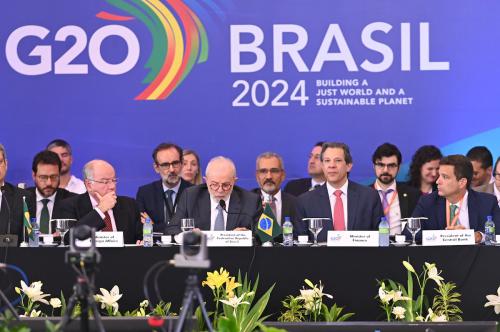
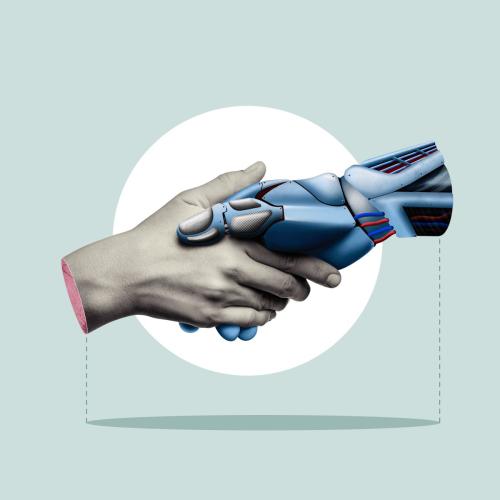

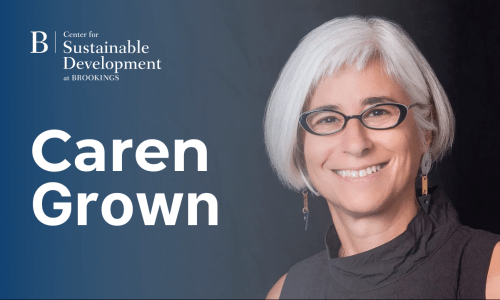


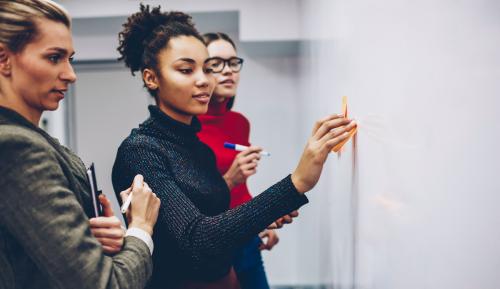
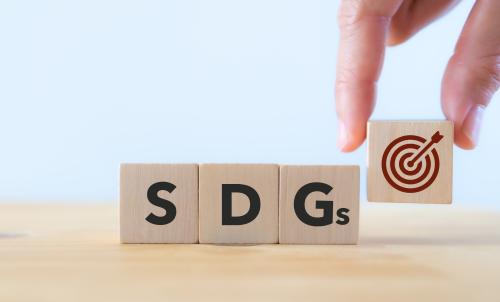


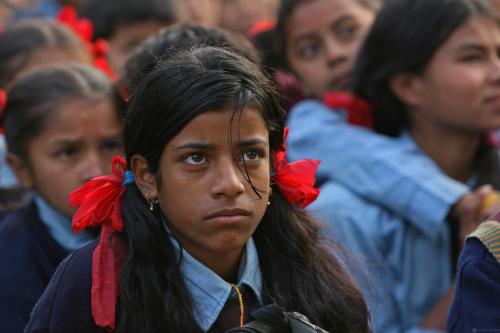

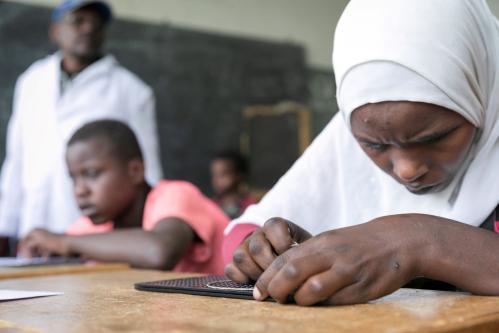
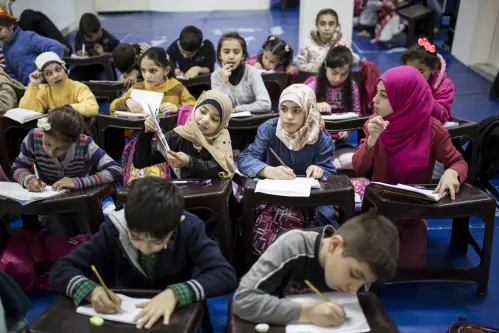

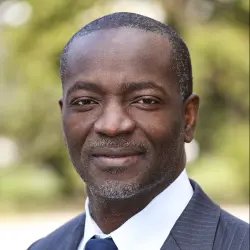


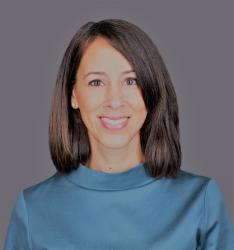
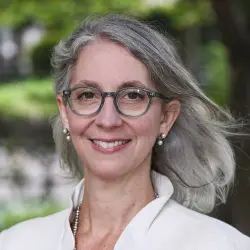




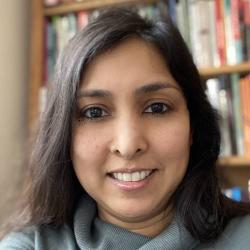
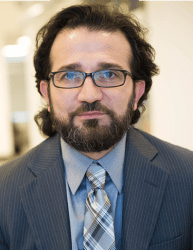
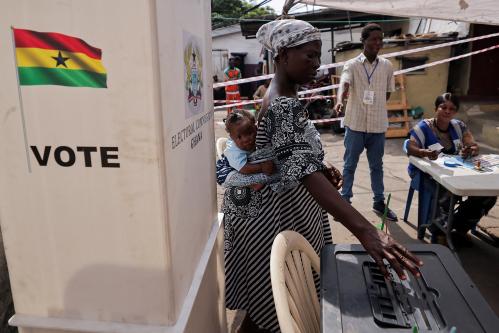
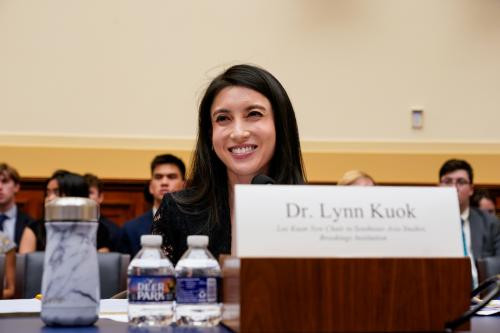
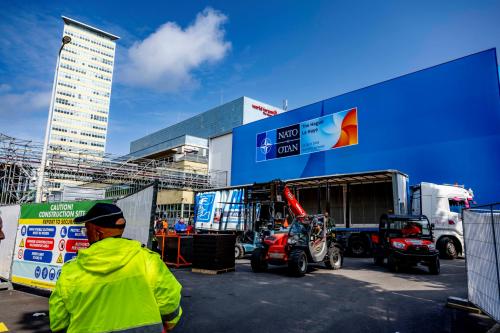
Commentary
What to watch for at the 2024 UN General Assembly
Brookings scholars weigh in
September 19, 2024